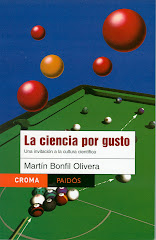by Martín Bonfil Olivera
Published on Milenio Diario, March 25, 2009
 I have just been to one of the 13 wonders of Mexico: the basalt prisms of Santa María Regla, in the state of
I have just been to one of the 13 wonders of Mexico: the basalt prisms of Santa María Regla, in the state of When he came to
But for a naturalist such as Humboldt, and for a relentless atheist like this columnist, the divine explanation is not satisfactory: it doesn't really explain anything. Could there be a natural process that allows hundreds of hexagonal prisms to be formed and carefully stacked ?
Basalt prisms, although rare, are not unique. There are 10 or 15 sites in the world with similar structures: the “giant's causeway”, in
A second hint is the hexagonal shape of the prisms. There is an old saying in northern
And how could melted lava —basalt is solidified magma— form individual vertical prisms?  The answer relies in the existence of self- organized structures in nature. "Bénard cells" are example : when heating a liquid from below, the convection movement —hot water goes up and cold goes down— can form hexagonal columns of water that keep circulating as long as there's a temperature difference. Prisms are fossilized convection cells that were solidified when they quickly cooled down.
The answer relies in the existence of self- organized structures in nature. "Bénard cells" are example : when heating a liquid from below, the convection movement —hot water goes up and cold goes down— can form hexagonal columns of water that keep circulating as long as there's a temperature difference. Prisms are fossilized convection cells that were solidified when they quickly cooled down.
The mineral world can form marvelous and arranged structures. The same thing occurs, but augmented, in the living world. Darwin, another naturalist, saw it and explained it. Because of this, and more the basalt prisms of Hidalgo are really worth visiting.
(Take a look at my pictures of the basalt prisms here)
(translated by Adrián Robles Benavides)
To receive Science for pleasure weekly
in your email, subscribe here!







